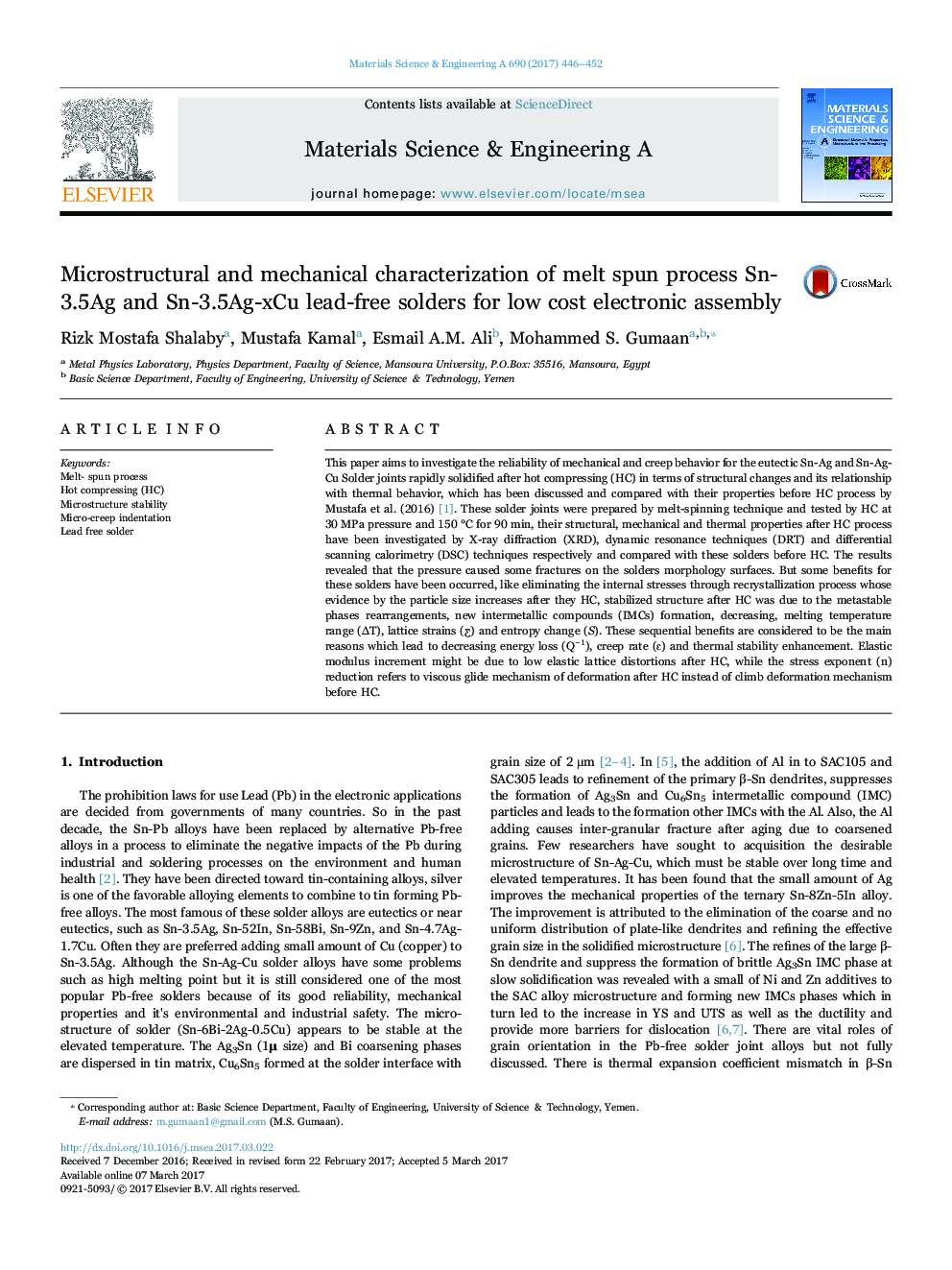| کد مقاله | کد نشریه | سال انتشار | مقاله انگلیسی | نسخه تمام متن |
|---|---|---|---|---|
| 5455973 | 1514653 | 2017 | 7 صفحه PDF | دانلود رایگان |
عنوان انگلیسی مقاله ISI
Microstructural and mechanical characterization of melt spun process Sn-3.5Ag and Sn-3.5Ag-xCu lead-free solders for low cost electronic assembly
دانلود مقاله + سفارش ترجمه
دانلود مقاله ISI انگلیسی
رایگان برای ایرانیان
موضوعات مرتبط
مهندسی و علوم پایه
مهندسی مواد
دانش مواد (عمومی)
پیش نمایش صفحه اول مقاله

چکیده انگلیسی
This paper aims to investigate the reliability of mechanical and creep behavior for the eutectic Sn-Ag and Sn-Ag-Cu Solder joints rapidly solidified after hot compressing (HC) in terms of structural changes and its relationship with thermal behavior, which has been discussed and compared with their properties before HC process by Mustafa et al. (2016) [1]. These solder joints were prepared by melt-spinning technique and tested by HC at 30 MPa pressure and 150 °C for 90 min, their structural, mechanical and thermal properties after HC process have been investigated by X-ray diffraction (XRD), dynamic resonance techniques (DRT) and differential scanning calorimetry (DSC) techniques respectively and compared with these solders before HC. The results revealed that the pressure caused some fractures on the solders morphology surfaces. But some benefits for these solders have been occurred, like eliminating the internal stresses through recrystallization process whose evidence by the particle size increases after they HC, stabilized structure after HC was due to the metastable phases rearrangements, new intermetallic compounds (IMCs) formation, decreasing, melting temperature range (âT), lattice strains (ƹ) and entropy change (S). These sequential benefits are considered to be the main reasons which lead to decreasing energy loss (Qâ1), creep rate (É) and thermal stability enhancement. Elastic modulus increment might be due to low elastic lattice distortions after HC, while the stress exponent (n) reduction refers to viscous glide mechanism of deformation after HC instead of climb deformation mechanism before HC.
ناشر
Database: Elsevier - ScienceDirect (ساینس دایرکت)
Journal: Materials Science and Engineering: A - Volume 690, 6 April 2017, Pages 446-452
Journal: Materials Science and Engineering: A - Volume 690, 6 April 2017, Pages 446-452
نویسندگان
Rizk Mostafa Shalaby, Mustafa Kamal, Esmail A.M. Ali, Mohammed S. Gumaan,